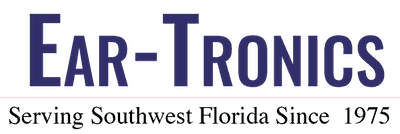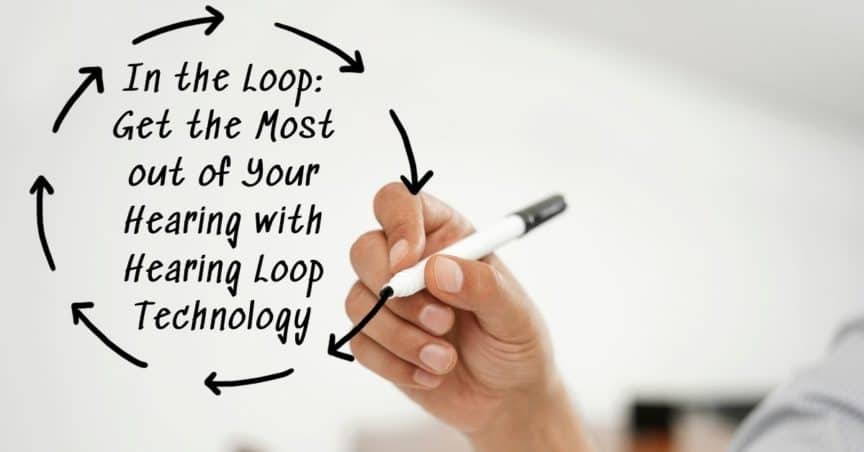Technology continues to advance at a seemingly faster and faster rate each year and hearing technology is no exception. With advancements like Bluetooth, smartphone interfacing and rechargeable batteries, it has never been easier and more convenient to hear, even with a hearing impairment.
Hearing loop/T-coil technology, a long-standing feature in many hearing aids, makes it easier for you to hear in a stadium, auditorium, church or other large public space.
All About Hearing Loops
Have you ever found yourself struggling to hear the sound of a speaker on stage at a crowded venue? Perhaps there were many people speaking at once around you in the audience or the sound seemed to distort in your hearing aids.
If this has happened to you, then you most likely could benefit from hearing aids that are hearing loop compatible. A hearing loop is actually an audio induction loop, which can send an audio signal to many people at once using electromagnetic power.
Using your hearing aid you can tap into the venue’s induction loop, relieving you of the struggle it can take to hear in a loud, large space. Even those who use hearing aids can often struggle to hear in a loud or crowded setting. Often, sound broadcast over a sound system can cause distortion for people with hearing aids because of the increased volume.
However, when you tap into the hearing loop of many public places the sound is wirelessly delivered to your ears, creating clear, feedback free sound quality. No need to be distracted by the other sounds in a crowded space. You can be sure to hear the sound you came to hear without interruption.
How Does a Hearing Loop Work?
Hearing loop technology consists of a small wire, which is installed around the floor or ceiling of a public space like a theater, church, auditorium or even public transit stations and airports. There is also a small copper wire, referred to as a T-coil, which is embedded in certain hearing aids.
Sound, which is broadcast out of a room’s sound system, also transmits the audio to the room’s induction loop. The beauty of this technology is that anyone who has a T-coil in their hearing aid can tap into the sound, sending clear audio to one person’s hearing aid or potentially hundreds. This is why hearing loops are so wonderful for public spaces, by creating access for many people with different levels and styles of hearing impairment.
Who Should Use a Hearing Loop?
Hearing loops are often found as a form of accessibility in public venues such as churches, museums, lecture halls, etc. In many large public places, sound tends to bounce around causing distortion and echo. Furthermore, with noise of people chatting, and many sources of sound, it can be hard for anyone to hear.
Hearing loop technology is often available at the bank teller or the drive-thru pharmacy as well, to make these interactions more accessible for people with hearing loss.
For those who use hearing aids, public spaces can be a nightmare for hearing. Fortunately hearing loops can eliminate distortion and distraction, making it easy to hear the main event you came to hear. If you have ever struggled to hear in a loud venue or space, then getting hearing aids that are compatible with hearing induction loops are perfect for you.
Hearing Loops Really Work
If you are skeptical about the benefits of hearing loop technology examine this survey from 2014. The survey asked 866 adults with T-coil hearing aids to rate their experiences with hearing loop technology on a scale of 1 to 10. The results were overwhelmingly positive with 86% of T-coil equipped hearing aid users reporting sound quality using this technology between 8 and 10! Hearing loop users were able to understand sound transmitted through the PA without distraction.
More Benefits of Hearing Loop Technology
Besides eliminating distraction of background noise and distortion that the audio from a loud PA system can send out, hearing loops also promote a more sanitary environment. In the time of increased need for sanitary methods, hearing loops are invaluable. You won’t need to wait in line to receive headphones, which many theaters, churches and museums in the past have offered. You won’t have to worry if they have been properly sanitized. All you have to do is trigger a setting on your own hearing aids manually or by using your smartphone to hear the sound from a space’s PA, without distraction and distortion or the spread of germs.
Discover the Convenience of Hearing Loops
Are you ready to get the most out of your hearing aids and hear clearly in public listening environments? If you haven’t already, contact us to find out which hearing aids offer compatibility with induction loop technology and enjoy the sounds in public settings, stress free.

